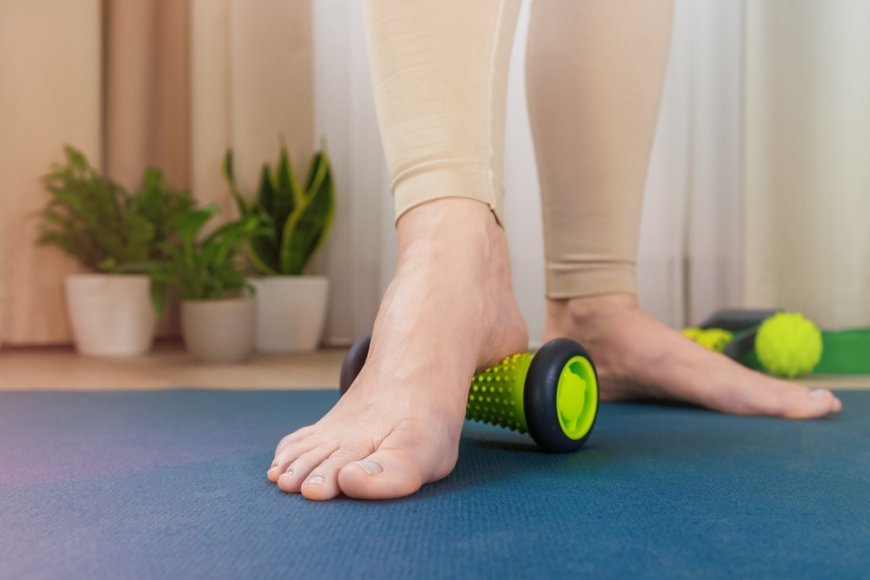The Agonizing Arch: Why Your Foot Hurts and How to Fix It

Ever woken up in the morning, taken those first few steps, and felt a sharp, stabbing pain in the arch of your foot? Or maybe after a long day of walking or standing, your feet feel like they've been through battle. If this sounds familiar, you're not alone. Foot pain in the arch is a common yet frustrating issue that can make even the simplest tasks feel unbearable.
But what’s behind this relentless discomfort? What can you do for relief? Let's dive deep into the common causes of arch pain, explore the best treatment options, and uncover the secrets to keeping your feet happy and pain-free.
Why Does My Foot Arch Hurt? Here are the Most Common Culprits!
1. Plantar Fasciitis: The Arch Enemy
The most common cause of heel pain and arch discomfort is plantar fasciitis, a condition that develops when the plantar fascia—the thick band of tissue running along the bottom of your foot—becomes inflamed.
How it happens:
- Repeated stress from activities like running, standing for long periods, or wearing unsupportive shoes
- Tight calf muscles that put extra strain on the foot
- Sudden weight gain, which increases pressure on the arch of the foot
How it feels:
- A sharp, stabbing pain in the arch, especially when getting out of bed in the morning
- Increased discomfort after prolonged walking or standing
- Relief when resting, but pain returns as soon as you move again
2. Flat Feet vs. High Arches: When Your Foot Structure Works Against You
Your foot’s natural arch is meant to absorb shock and distribute weight evenly. But when your foot structure is out of balance, arch pain can become a daily struggle.
Flat Feet
People with flat feet have little to no arch, which can strain the posterior tibial tendon and lead to inflammation. Without proper support, the foot may overpronate (roll inward), causing even more stress.
High Arches
On the flip side, high arches can be just as problematic. They force more pressure onto the heel and ball of the foot, making the plantar fascia work overtime to stabilize your steps.
Key signs:
- Flat feet? You might feel discomfort on the inner side of your foot.
- High arches? You’re more likely to experience pain under the ball of your foot or heel.
3. Muscle Tightness & Overuse Injuries: The Hidden Causes
Tight calf muscles are often overlooked but play a huge role in foot pain. When the calves are stiff, they limit ankle flexibility, increasing tension on the plantar fascia and posterior tibial tendon.
Other common overuse injuries include:
- Stress fractures from repetitive impact activities
- Tendonitis due to excessive strain on the foot's supporting tendons
- Ligament sprains from sudden twists or improper footwear
How Do You Treat Foot Pain in the Arch? Let’s Talk about Relief that Works!
1. Supportive Shoes: Your First Line of Defense
Wearing supportive shoes is non-negotiable. If your go-to footwear lacks arch support, you’re setting yourself up for chronic pain.
What to look for:
✔️ Good arch support
✔️ Cushioned insoles
✔️ A stable, non-flexible sole
If you're on your feet all day, wearing support shoes can make a world of difference. Custom orthotics can also provide targeted relief.
2. Ice and Anti-Inflammatory Relief
When your foot is screaming in pain, applying ice is one of the fastest ways to reduce inflammation. Use ice packs for 15-20 minutes at a time, especially after physical activity.
Pair this with nonsteroidal anti-inflammatory drugs (NSAIDs) like ibuprofen to ease swelling and discomfort.
3. Stretching & Strengthening: The Secret to Long-Term Relief
Your feet work hard for you—return the favor with some TLC. Regular stretching can improve flexibility, reduce tension, and strengthen the posterior tibial tendon and plantar fascia.
Try these simple moves:
- Calf stretches: Stand facing a wall, press one foot back, and stretch your calf muscle.
- Arch roll: Roll a frozen water bottle under your foot for a combined stretch and ice treatment.
- Toe curls: Pick up small objects with your toes to strengthen your foot muscles.
4. Avoid Walking Barefoot (Yes, Really!)
It might feel natural, but walking barefoot—especially on hard surfaces—can make plantar fasciitis and arch pain worse. Always wear supportive slippers or shoes indoors to protect your feet.
When Is It Time to See a Podiatrist?
If your pain isn’t improving despite trying these remedies, it may be time to seek professional help. A podiatrist can create a personalized treatment plan, which may include:
- Custom orthotics tailored to your foot structure
- Physical therapy to strengthen weakened muscles
- Advanced treatments like shockwave therapy for chronic painful foot conditions
How to Prevent Future Foot Pain?
The best way to deal with arch pain?
- Always wear supportive shoes that fit well and provide cushioning.
- Stretch your calf muscles and feet daily to keep them flexible.
- Use ice packs and NSAIDs if you feel any soreness after activity.
- Avoid walking barefoot on hard floors for extended periods.
- Maintain a healthy weight to reduce strain on your arch of the foot.
Your Feet Deserve Better
Foot pain in the arch isn’t just annoying—it can disrupt your daily life. Whether it’s plantar fasciitis, flat feet, or overuse injuries, understanding the cause of your discomfort is the first step toward relief.
By making small changes—like wearing support shoes, stretching regularly, and using ice packs—you can protect your feet and enjoy pain-free movement. But if your symptoms persist, don’t tough it out—seek help and get back on your feet with confidence.
Your arches work hard for you—give them the support they deserve!
What's Your Reaction?

























































